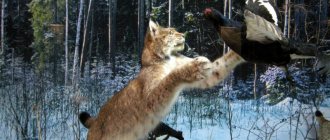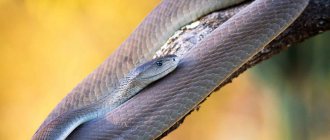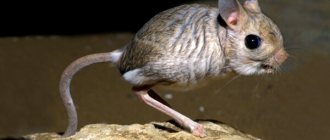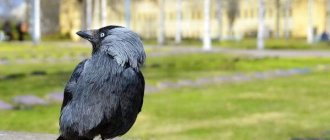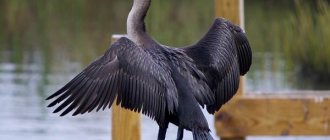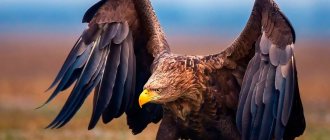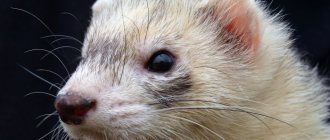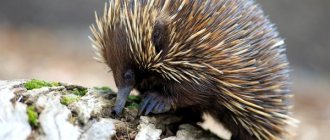Description
The snow leopard is a large carnivorous mammal that lives in Central Asia. Initially, due to its external resemblance to a leopard, it was classified as a species of leopard (Panthera pardus), hence the name “snow leopard”. However, the snow leopard is currently classified as a separate species of snow leopard (Panthera Uncia). According to a number of characteristics, the snow leopard occupies an intermediate position between the genus Big cats (Panthera) and Small cats (Felinae), however, it is currently classified as a genus of big cats along with the leopard, jaguar, tiger and lion.
The name snow leopard comes from the Turkic language; it was borrowed by Russian fur traders from local hunters back in the 17th century. In different regions of Central Asia, the predator was called differently: irbish, irbiz, irvish, ilbers. The word took root in the Russian language, and over time the predator was given a single name, snow leopard.
In Europe, the first description and image of a snow leopard was made by Georges de Buffon, a famous French naturalist, in 1761. In 1775, the German naturalist Johann Schreber compiled the first scientific description of the animal. Subsequently, many famous scientists participated in snow leopard research, including the German encyclopedist Peter Simon Pallas and the Russian naturalist Nikolai Przhevalsky.
Description and features of the snow leopard
In appearance, the snow leopard is a squat leopard with long, white fur. She is 6 centimeters, which is a record among cats. The snow leopard's tail is especially long. Other features of the cat include:
- the ability to purr and the lack of the ability to growl, like other big cats
- body length from 200 to 230 centimeters, taking into account the meter-long tail
- weight from 25 to 75 kilograms, where the upper limit belongs to males, and the minimum indicators belong to females
- 60 cm height at the withers
- small, rounded ears without tufts at the ends
- large gray-black markings with a diameter of about 7 centimeters of a ring type on the body
- small solid black spots on the face and paws
- furry paw pads that prevent the cat from getting frostbite in the snowy highlands
- yellow-green eyes with a round black pupil
- combination of black viriss on the face with white
- 30 teeth
Zoologists call the snow leopard a medium-sized cat, since half of the predator’s habits are taken from small ones, and the other half from large whiskered ones. The latter are characterized by a pattern on the head, a round pupil, which allows the structure of the larynx to growl.
The leopard is deprived of the latter, and is in a pose characteristic of small mustachios with a vertical pupil.
Called medium, the size of the snow leopard is comparable to large cats. However, the extinct saber-tooth tiger was also distinguished by its size. Despite its size, it was a small cat.
The snow leopard's wide paws provide good traction when traveling through mountainous terrain
Dimensions and appearance
The snow leopard is a large, graceful cat. Externally, the snow leopard is similar to a leopard, but differs in its stockier body, longer tail and fur. The length of the body including the head is approximately 1-1.4 meters, the length of the tail is about 0.9-1.1 meters, that is, the tail of the animal is more than 3/4 of the length of the body. The tail is covered with long hair, so it visually appears very thick. The thickness of the tail is almost equal to the circumference of the animal's forearm. The tail helps the predator maintain balance when jumping.
Males are larger than females. The average weight of a male is about 45-55 kg, the female weighs on average from 25 to 40 kg. The height of the animal at the withers is about 60 cm.
The paws are wide and massive, but short relative to the body. The snow leopard has retractable claws, so it leaves behind round tracks without claw marks. The head of the animal is small relative to the size of the body, round. Small rounded ears without tassels at the ends; in winter, due to the thick fur, they are practically invisible. The animal has long whiskers (whiskers), black or white, up to 10.5 cm long. The predator does not have a mane or sideburns.
The snow leopard has thick, soft fur. The length of the hair on the back reaches 55 cm. In terms of the thickness of its fur, the snow leopard resembles small cats, this distinguishes it from other big cats - lion, leopard, tiger, jaguar. The color is brownish-gray, without any admixtures of yellow or red. The fur on the back and upper sides is smoky. The fur on the belly, lower sides and inside of the paws is a lighter shade. The smoky shade is more pronounced in winter than in summer. Smoky gray fur with dark spots helps snow leopards remain undetected against the background of rocks, stones and snowdrifts.
Large ring-shaped dark spots in the form of rosettes are scattered throughout the skin. There are also smaller solid spots of dark gray or black. The spots on the head are smaller, those on the back and neck are larger. At the base of the back, the spots often merge with each other, forming longitudinal black stripes along the animal's spine. The tip of the tail is usually black.
Young snow leopards have more distinct spots. Females and males do not differ in color. Geographical variation in color is practically absent. This is mainly due to the small habitat of the animal.
Description of the appearance of the snow leopard
The appearance of the snow leopard resembles a leopard, despite its rather distant relationship. In addition, the snow leopard is much smaller than its relative. At the withers the animal grows up to 60 centimeters. The body of the snow leopard reaches one and a half meters in length, the tail is a whole meter! Of the entire cat family, snow leopards have the longest tail in relation to their body . The tail is used to maintain balance during huge jumps - over a distance of 15 meters. Moreover, the weight of an adult leopard can reach 100 kilograms. Males are usually larger than females.
The snow leopard's head is small, about 20 centimeters long. The tips of the ears are rounded and there are no tassels. Wide paws prevent the predator from falling into the snow.
The coat color is predominantly gray with black spots. In winter, the skin has a darker color, and in summer it becomes lighter. The spots are shaped like a five-leaf flower, often with an additional spot in the middle. The head, neck and limbs do not have clearly defined spots, but rather black smears. The spots are large and can reach a diameter of 7 centimeters. The predator's fur is thick and long, the hairs reach a length of 5.5 centimeters. This is due to the fact that snow leopards live mainly in cold climates. It is noteworthy that snow leopards even grow fur between their toes . This saves the snow leopard from the cold in winter and from hot stones in summer. It also prevents it from slipping on ice.
An adult animal has 30 teeth. They do not emit a roar like other large representatives of the cat family, but mostly meow in low tones.
Character and features
The snow leopard leads a solitary lifestyle. The only exception is females raising their grown cubs. The predator strictly adheres to the boundaries of its own territory, marking it with smell and claw marks. A male's territory may overlap with the territories of several females. If other individuals enter the territory of a snow leopard, the animal does not show aggression, regardless of gender. The size of an individual territory depends on the amount of prey, and ranges from 20 to 200 square kilometers.
The predator regularly makes detours around its territory, and chooses the same route. The detour includes pastures and watering places for ungulates. When walking, the animal prefers to move along river beds or along mountain ranges. Due to the significant length of the route, the snow leopard visits the same place only once every few days. A stable route makes the animal more vulnerable to poachers.
The snow leopard does not move well on high, loose snow, so in winter the predator either tramples permanent snow paths or moves to places with lower snow cover.
The snow leopard is active mainly at dusk, hunting more often before sunset and at dawn. During the day the animal rests and sleeps. As a lair, it usually chooses small caves, crevices in rocks, depressions in rocky piles, secluded places under an overhanging slab. A snow leopard can use the same den for several years.
Popular message topics
- About any plant from the Red Book
Of course, the snow-white water lily can be classified as a member of the Water Lily family. The usual habitat for favorable growth and development are rivers and lakes, as well as many aquatic swamps. Given a favorable environment, it can grow throughout - City of Sterlitamak
Residents of the two capitals, minus the first generation, have the impression that there is no life beyond the boundaries of their cities. What can we say, residents of the province believe that outside their province the situation is even worse. Practice shows absolutely the opposite - Hornbeam tree
Hornbeam is a deciduous tree from the birch family. The tree's height can reach 30-40 meters, its lifespan can be up to 250 years, and its diameter can be about 2 meters. There are about 40 varieties of this tree,
Where does he live?
Snow leopards live only in the mountains, at an altitude of 1,500 meters above sea level, and can climb to a height of 6,000 meters and higher. The main habitat of the snow leopard is the mountains of Central Asia; it is an exclusively Asian species. Today, the animal lives in the following countries:
- Russia
- China
- Afghanistan
- Kyrgyzstan
- Mongolia
- India
- Kazakhstan
- Uzbekistan
- Tajikistan
- Butane
- Nepal
- Pakistan
The geographical distribution of the species extends from the Hindu Kush Mountains in eastern Afghanistan through the Pamir and Tien Shan mountain ranges across the territory of Kyrgyzstan and China. The southern part of the range includes the Himalayan range, Tibet and the Kunlun Mountains, the northeastern part - Altai and the Sayan Mountains.
The territory of Russia accounts for only 2-3% of the animal’s total habitat; its area is about 60,000 square kilometers. In Russia, the snow leopard can be found in the mountains of Khakassia, the Krasnoyarsk Territory, Tuva, the Altai Republic, Buryatia and the Altai Territory.
The favorite habitat of the snow leopard is the upper zones of high mountains above the zone of tree vegetation: treeless steep stone cliffs, deep gorges, alpine meadows, and bushes. It is also found on flatter areas of the mountains, where bushes and scattered rocks provide the opportunity to sneak up on prey unnoticed. In some areas, the predator lives lower in the forest belt. Typically, the snow leopard moves into the forest in the winter season, when the snow cover is high. In summer, the animal rises higher following the seasonal migration of its main prey—ungulates.
Habitats and numbers of snow leopards
You can meet this magnificent animal in Central Asia. The main habitats of snow leopards are located in such states as:
- Afghanistan,
- Russia,
- China,
- India,
- Kazakhstan,
- Kyrgyzstan,
- Mongolia,
- Uzbekistan and others.
You can meet a mammalian predator in the highlands, at approximately an altitude of 1500 to 5 thousand meters above sea level. In Russia, snow leopard habitats are located in Khakassia, Altai, Tyva, and the Krasnoyarsk Territory.
Appearance of a snow leopard (irbis)
What does a snow leopard eat?
The snow leopard's diet consists of the following animals:
- roe deer
- deer
- horned and Siberian mountain goats
- wild and blue sheep
- argali
- wild boars
- musk deer
- takins
- gorals
- hares
- gophers
- birds - pheasants, chukars
The snow leopard is a classic predator that eats meat. The basis of its diet all year round are large ungulates (deer, goats, sheep). Capable of hunting animals three times its own body weight. When there is a lack of food, it also hunts small rodents and birds, and can attack livestock (sheep, horses). In the summer, he supplements his diet with plant foods - he eats grass, berries, and green shoots of plants.
The snow leopard usually hunts alone, although in autumn and winter females may hunt together with their grown cubs. The snow leopard's favorite method of hunting is a surprise ambush attack on its prey. The predator secretly creeps up to the prey, hiding behind the natural shelters of the landscape, or watches for prey near watering holes, paths, or hiding on rocks. When there are several tens of meters left to the prey, the snow leopard attacks with lightning speed and overtakes the prey in several jumps. The predator tries to immediately grab large animals by the throat in order to suffocate, tear the throat or break the neck. In case of a miss, the predator rarely pursues the prey further than 300 meters, preferring to set up a new ambush.
After a successful hunt, the snow leopard drags its prey into shelter, under a rock or behind stones, to eat in peace. A snow leopard can eat no more than 3 kg of meat at a time. Unlike the leopard, the snow leopard rarely eats carrion and disdains stale meat, so it usually throws away the remains of its prey.
Where the Snow Leopard Lives in Russia and Other Places
Before 2003, the total number of wild snow leopards ranged from 4,080 to 6,500 individuals. In 2021, the cat's population was estimated at 4,678-8,745 individuals, indicating that the total number of snow leopards was greater than previously thought.
| A country | Habitat area, km2 | Estimated population size |
| Afghanistan | 50000 | 50-200 |
| Butane | 15000 | 100-200 |
| China | 1100000 | 4500 |
| India | 75000 | 516-524 |
| Kazakhstan | 50000 | 100-120 |
| Kyrgyzstan | 105000 | 300-400 |
| Mongolia | 101000 | 1000 |
| Nepal | 30000 | 300-400 |
| Pakistan | 80000 | 250 |
| Altai-Sayan region, Russia | 20 000 | 70-90 |
| Tajikistan | 100000 | 250-280 |
| Uzbekistan | 10000 | 30-120 |
The snow leopard inhabits the alpine and subalpine zones at altitudes from 3000 to 4500 m from eastern Afghanistan to Mongolia and western China. In the northern countries of its range, the animal also lives at lower altitudes.
The Russian population of snow leopards spreads from the west of Lake Baikal through southern Siberia, in the Kunlun, Altai, Sayan and Tanna-Ole mountains, in the Tien Shan, through Kazakhstan, Kyrgyzstan, Tajikistan and Uzbekistan to the Hindu Kush in eastern Afghanistan, the Karakoram in northern Pakistan, in the Pamir Mountains and the high altitudes of the Himalayas in India, Nepal, Bhutan and the Tibetan Plateau.
In Mongolia, it is found in the mountains of the Mongolian and Gobi Altai and in the Khangai Mountains. In Tibet it is found as far as Altyn Tagh in the north.
The potential habitat of the Snow Leopard in the Indian Himalayas is estimated to be less than 90,000 square kilometers in the states of Jammu and Kashmir, Uttarakhand, Himachal Pradesh, Sikkim and Arunachal Pradesh, of which about 34,000 square kilometers are considered good habitat, and 14.4 % protected. In the early 1990s, the snow leopard population in India was estimated at approximately 200–600 individuals living in 25 protected areas.
In summer, Snow Leopards usually live above the tree line in mountain meadows and rocky areas at altitudes between 2,700 and 6,000 m. In winter, they descend into forests at altitudes of about 1,200 to 2,000 m.
Snow leopards easily cope with rocky, rugged terrain and can easily travel through snow up to 85 cm deep, although they prefer to use existing trails made by other animals.
Snow leopards were recorded using camera traps in 16 locations in the isolated Wakhan corridor in northeastern Afghanistan.
Today, Snow Leopards live in the following protected areas:
- Pakistan - national parks: Chitral Gol in the province of Khyber Pakhtunkhwa, Karakoram and Khanjerab in Gilgit-Baltistan, Deosai, as well as the Naltar Nature Reserve and several other protected areas, the area of which is less than 300 km².
- India - national parks: Hemis, Kishtwar, Dachigam, Pin Valley, Greater Himalayas, Nandadevi, Gangotri, Valley of Flowers; reserves: Gulmarg, Hirpora, Overa Aru and Kibber and some others.
- Nepal - Apite Nampu Nature Reserve, Dhorpatan Game Reserve, Shey Phoksundo and Annapurna National Parks and others.
- Bhutan – Jigme Dorji National Park, Centenary Wanchuk National Park, Bumdeling Nature Reserve.
- China - Komolangma and Sanjiangyuan National Nature Reserves on the Tibetan Plateau and Qilianshan in the Qilian Mountains, Tomur National Nature Reserve in the western Tien Shan Mountains.
- Uzbekistan – Chatkal State Nature Reserve, Zaamin and Ugam-Chatkal National Parks, Gissar National Reserve.
- Kazakhstan – Aksu-Zhabagly Nature Reserve.
- Kyrgyzstan – Sarychat-Ertash State Nature Reserve, Sary-Chelek State Biosphere Reserve, Besh-Tash National Natural Park, Kyrgyz-Ata and Karakol National Parks, Chychkan State Reserve.
- Tajikistan – Tajik National Park.
- Russia – Katunsky Nature Reserve, Sayano-Shushensky Nature Reserve.
- Mongolia – Altai-Tavan-Bogd, Tsambagarav-Uul, Khara-Us-Nur and Gobi-Gurvan-Saikhan national parks.
Reproduction
There is little data on the reproduction of animals in the wild. Snow leopards are solitary by nature, so females communicate with males only during estrus. Puberty occurs upon reaching the age of 3-4 years. Females give birth to cubs approximately every 2 years.
The mating season for snow leopards begins around the end of winter - beginning of spring. The female attracts males with her voice, emitting low, creaking, drawn-out sounds, the male responds with a bass meow. The duration of pregnancy is about 3-3.5 months. The female makes a den in a hard-to-reach place, usually in crevices or depressions. One litter usually contains 2-3 kittens, much less often 4 or 5 kittens are born. The male does not take part in raising the offspring.
Kittens are born blind and helpless. The weight of a newborn cub is up to 500 grams, the total length is no more than 30 cm. Newborn kittens have larger and darker spots. The eyes open on days 6-8. For the first 1.5-2 months, kittens feed on their mother’s milk; after 2 months, they begin to accompany their mother on hunts and eat meat. In the first year of life, the cubs live with their mother, and become completely independent only in the second winter.
Puberty and reproduction
Snow leopards become sexually mature after two to three years and typically live 15-18 years in the wild, and up to 25 years in captivity. A female's estrus typically lasts between five and eight days, and males generally do not seek another partner after mating, probably because the short estrus period does not give them enough time. Snow leopards mate in the usual cat-like position, 12 to 36 times a day.
Snow leopards are unique among big cats in that they have a well-defined birth peak. They usually mate at the end of winter, which is marked by a noticeable increase in marks and an active call for females. Females have a gestation period of 90–100 days, so young are born from April to June.
The generation length of the Snow Leopard is eight years.
The mother gives birth to her litter in a rocky den or crevice lined with fur litter. The number of cubs varies from one to five, but the average is usually two kittens.
The cubs are blind and helpless at birth, although they already have thick fur and weigh from 320 to 567 g. Their eyes open after about seven days, and they can walk after five weeks and are completely weaned at the tenth week. They also have black spots on their fur when they are born, which turn into rosettes as they mature.
Snow leopard kittens leave the den when they are about two to four months old, but they remain with their mother until they are fully independent, which occurs after about 18 to 22 months.
Young snow leopards disperse over considerable distances, even crossing wide plains to find new hunting grounds. This likely helps reduce the inbreeding that would otherwise be common in their relatively isolated environment.
Population and conservation of the species
The snow leopard is listed in the Red Book of the International Union for Conservation of Nature (IUCN) and the Red Book of Russia. In all 12 countries where it lives, the snow leopard is a rare species, and hunting this predator is prohibited. Since 2013, all 12 countries in Central Asia where the animal lives have jointly launched a global program to conserve the snow leopard and its ecosystems. The program provides for the fight against poachers, the creation of protected areas, subsidizing the loss of livestock from snow leopards for farmers, etc.
Because snow leopards live in inaccessible mountainous areas, and because of their secretive lifestyle, there are only rough estimates of their population size. Currently, experts estimate that there are no more than 4,000 individuals living in the wild in the world. About 2,000 more predators live in zoos around the world. The number of snow leopards in Russia, according to experts, is no more than 70-90 individuals.
The number of snow leopards in the wild has been steadily declining, mainly due to high demand and rising prices for the animal's skin, and a simultaneous deterioration in the well-being of local residents. Despite the official ban on hunting snow leopards, poachers continue to hunt animals for their fur.
Significant damage to the population in Tibet was caused by rodent control, in which poisonous chemicals were used to control gophers and pikas. Snow leopards are also affected by poisons used to control wolves. The behavior of the animals themselves plays into the hands of hunters. Snowy ones are accustomed to hiding and blending into the terrain, this makes the task easier for poachers who own firearms.
Why is the snow leopard listed in the Red Book?
People's greedy hunting of snow leopards has led to a sharp decline in their numbers. The snow leopard is listed in the Red Book as a species in danger of extinction. Its population is catastrophically small. Throughout the entire range, the number is only six and a half thousand units.
The destruction of the animal because of its fur skin reduced the population to a critical level. The cost of a skin up to 60 thousand dollars on black Asian markets makes illegal hunting for snow leopard fur a very profitable activity. In addition, significant damage to the leopard population was caused by a rodent control campaign in Tibet, in which pesticides were used. The decrease in the number of rodents greatly affected the decrease in his diet.
In countries where snow leopards are still found, they are placed under government protection. The snow leopard is listed as a very rare taxon in the Red Book of Mongolia. The snow leopard is mentioned with the same wording in the IUCN Red Book. According to the data contained in the Red Book of Russia, the snow leopard is a rare species on the verge of extinction.
The inclusion of the taxon in the Red Book of a number of countries has not yet made it possible to completely stop poaching. Therefore, the international community and government agencies of countries where this beautiful and revered animal is still found will have to make a lot of efforts to restore its populations.
Nutrition
The snow leopard's diet mainly consists of animals that live in the mountains: roe deer, rams, goats. But if it is not possible to obtain such food, he can be content with birds or rodents.
The brave and cunning animal is also able to cope with a huge yak. During one hunt, a snow leopard can get several victims at once. He does not eat them on the spot, but moves them to a place convenient for him (tree, rock). One animal will last a wild cat for several days.
In summer, snow leopards, in addition to meat, can feast on vegetation. The leopard does not eat everything that he managed to get for “dinner”. He needs about 2-3 kilograms to get enough. In times of famine, a predatory animal can hunt domestic animals.
Amazing photos of rare snow leopards (18 photos)
Did you know that snow leopards are genetically closer to tigers than to leopards? Or that there are only 2,700 left in the wild? Because snow leopards are so rare, little is known about them in the scientific community and there are very few of them in the wild. Although these animals were documented as early as 1775, the first photograph was not taken until the 1970s.
In honor of International Snow Leopard Day, here are 18 photos of these elusive creatures that will make you want to head to your nearest zoo.
1. Snow leopards are classified as "vulnerable" on the International Union for Conservation of Nature's list of endangered species, meaning there are fewer than 10,000 adult individuals worldwide.
Photo: Justin Sullivan/Getty Images
A newborn snow leopard cub in an enclosure at the San Francisco Zoo.
According to the IUCN, the greatest threats to their safety come from residential and commercial construction, agriculture and aquaculture, energy production and mining, and road construction.
2. As of 2021, the number of snow leopards ranges from 2,710 to 3,386 individuals
Photo: Dennis W Donohue/Shutterstock
A snow leopard explores its domain.
Currently, snow leopards live in Afghanistan, Bhutan, China, India, Kazakhstan, Kyrgyzstan, Mongolia, Nepal, Pakistan, Altai-Sayan region, Tajikistan and Uzbekistan.
3. They are difficult to spot because their fur blends in well with their surroundings.
Photo: Courtesy of Bjorn Persson Photography
Do you see him?
The snow leopard is easy to miss among the bushes and rocks.
4. The snow leopard is native to Asia and ranges from eastern Afghanistan to Mongolia and western China.
Photo: VYACHESLAV OSELEDKO/AFP/Getty Images
A snow leopard at the Center of the Union for Nature Conservation and Biodiversity in Semenovka near the capital of Kyrgyzstan.
They live in alpine (mountain) and subalpine climates. These animals were found in Siberia, Pakistan, India, Uzbekistan and many other countries in this region.
5. Although they are called snow leopards, snow leopards are genetically closer to tigers than leopards.
Photo: James Devaney/WireImage/Getty Images
Snow leopard at the Bronx Zoo.
Although they are similar to tigers, another 2021 study found that snow leopards have similar DNA to lions, indicating that they interbred at some point in evolution.
6. You may have noticed their long tails. The snow leopard's tail is not just for beauty - it helps them maintain balance.
Photo: Courtesy of Bjorn Persson Photography
A snow leopard shows off its long, thick tail.
In addition to using the tail for balance, the snow leopard can wrap it around itself like a scarf to keep it warm during the cold season.
7. They live above all other cats
Photo: YouTube/Nat Geo WILD
You can enjoy the snow together.
According to National Geographic, they live in temperatures below -40 degrees Celsius.
8. Just like your house cat, a snow leopard can purr.
Photo: YouTube/Nat Geo WILD
The two were found in their lair in Mongolia.
However, they cannot roar.
9. Although they look fierce, snow leopards are not known to attack humans. In fact, it is one of the least aggressive big cats
Photo: Sebastian Gollnow/picture alliance via Getty Images
Snow leopard Kailash yawns at the Wilhelma Zoo in Stuttgart, Germany during the opening of a new snow leopard complex.
They don't even know how to defend themselves and easily abandon their prey.
10. Not a single snow leopard attack on a person has been recorded in history.
Photo: James Devaney/WireImage/Getty Images
Snow leopard at the Bronx Zoo after a snowstorm.
A snow leopard was rumored to have attacked a person in 2013 in Pakistan, but the incident has not been officially verified.
11. Female snow leopards are single mothers who stay with their babies for an average of 18 months before releasing them into the wild.
Photo: Mark Kolbe/Getty Images
Samarra cares for her twin cubs on their first day of their official introduction at Taronga Zoo in Sydney, Australia.
Dads do not stay in the family after mating.
12. In the wild they are loners
Photo: Courtesy of Bjorn Persson Photography
Completely alone.
They are crepuscular animals, meaning they are awake at dawn and dusk.
13. Snow leopards are very difficult to photograph in the wild, so most photographs are taken in zoos
Photo: SEBASTIEN BOZON/AFP/Getty Images
A 2-month-old snow leopard takes one of his first walks at the zoo in Mulhouse, France.
According to the World Wildlife Fund, snow leopards are called "ghosts of the mountains" because they are so rarely seen. For them, there are not even such concepts as a pride or a pack, so it is almost impossible to meet them together.
14. The storyline of the 2013 film The Secret Life of Walter Mitty involves a photographer photographing snow leopards in the Himalayas.
Photo: S. Kachel/Panthera/Academy of Sciences Tajikistan/U. Delaware
A snow leopard was photographed as part of a study in Tajikistan.
The film follows a photographer (played by Sean Penn) in a remote part of the Himalayas attempting to photograph these elusive creatures.
15. There is also the 1978 work “The Snow Leopard,” written by famous novelist Peter Matthiessen, which tells the story of his two-month journey searching for snow leopards in Nepal.
Photo: TobyG/Shutterstock
A snow leopard rolls on fresh snow.
When Matthiessen set out on his journey, according to The New Yorker, scientists knew virtually nothing about snow leopards—the first recorded photo had only been taken eight years earlier, in 1970.
16. Zoos successfully breed snow leopards and contribute to conservation efforts
Photo: YouTube/Nat Geo WILD
From close range.
The first zoo to introduce snow leopards was the Bronx Zoo in the 1980s. Now more than 100 zoos around the world offer visitors the opportunity to get a glimpse of these rare creatures.
17. The snow leopard was declared the national predator of Pakistan and the state animal of Himachal Pradesh in India.
Photo: Elise Amendola/AP Images
Kira the snow leopard at Stone Zoo plays with one of her 3-month-old cubs in Stoneham, Massachusetts.
Pakistan is the only country in the world that has declared a national predator. And in 2007, the snow leopard was named the state animal of Himachal Pradesh.
18. If you want to get up close and personal with snow leopards, you can find them in over 100 zoos around the world
Photo: Bildagentur Zoonar GmbH/Shutterstock
You can see this beautiful animal with your own eyes.
In North America, snow leopards can be found in 68 zoos, and in Europe there are 71 zoos where snow leopards live.
